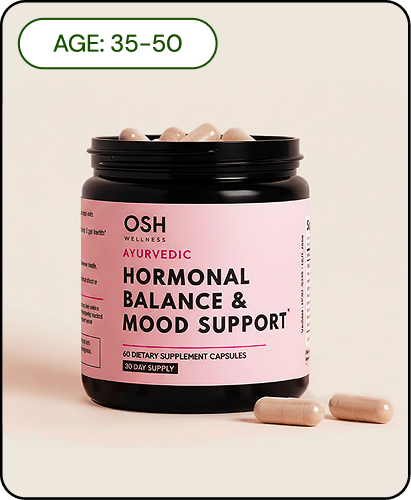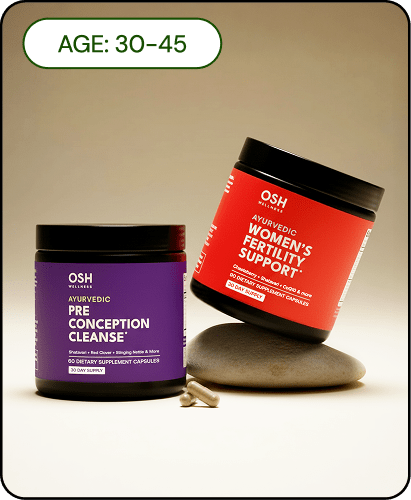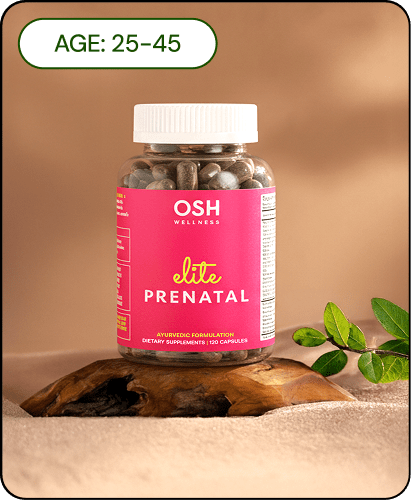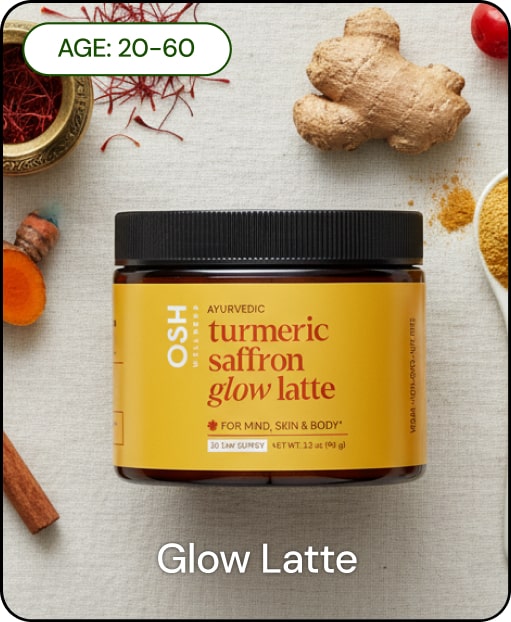Table of contents
Borage seed oil, extracted from the borage plant (Borago officinalis) seeds, is increasingly recognized for its health benefits, particularly among women aged 20 to 40. This oil is one of the richest natural sources of gamma-linolenic acid (GLA), an omega-6 fatty acid known for its role in hormone balance and inflammation regulation. With more women turning to natural solutions for managing menstrual discomfort, borage seed oil presents a promising option for alleviating cramps, bloating, and mood fluctuations.
While scientific studies continue to explore the full potential of borage seed oil, early research and user reports suggest its role in supporting hormonal and emotional well-being during menstruation
The Role of Omega-Rich Ingredients in Menstrual Health

The importance of omega fatty acids in women’s reproductive wellness is well-documented. Omega-3 and omega-6 fatty acids influence everything from mood to uterine contractions, making them vital during menstruation.
Omega-3 fatty acids, such as EPA and DHA, help reduce menstrual discomfort through their anti-inflammatory effects. A clinical study reported significant pain reduction in women with primary dysmenorrhea after omega-3 supplementation.
On the other hand, omega-6 fatty acids particularly GLA found in borage seed oil have a unique function. Once ingested, GLA converts into dihomo-gamma-linolenic acid (DGLA), which helps reduce inflammation by producing anti-inflammatory prostaglandins. These compounds ease menstrual cramps, breast tenderness, and mood swings by modulating uterine activity and hormone response.
As more women explore natural, non-pharmaceutical approaches to period care, omega-rich oils like borage have become key allies in managing menstrual discomfort.
Historical Overview of Borage Oil

Borage has a rich history rooted in traditional medicine. Native to the Mediterranean region and with origins in Syria, the borage plant has been cultivated and used across Europe, North Africa, and beyond for centuries.
Historically, borage leaves and flowers were consumed to promote courage. Legend has it that Roman soldiers drank borage-infused wine before battle. In medieval Europe, borage was used to treat fevers and respiratory infections. Its flowers and leaves were also added to salads and beverages for their cooling, uplifting effects.
The oil derived from borage seeds contains the highest natural concentration of GLA, about 23 grams per 100 grams. Today, it is widely used in dietary supplements to improve skin health, reduce joint inflammation, and balance skin health, reducing joint inflammation, and balancing hormones.
Fundamental Concepts of Omega Fatty Acids

Omega fatty acids are essential fats that the body cannot produce on its own, requiring dietary intake through food or supplements. The two most important types are:
Omega-3s (EPA, DHA, ALA): These are well-known for their anti-inflammatory properties and their role in cardiovascular and brain health.
Omega-6s (especially GLA): While some omega-6s can be pro-inflammatory, GLA is the exception. It converts to DGLA, which has anti-inflammatory effects and contributes to the production of hormone-regulating prostaglandins.
These prostaglandins play a significant role in managing menstrual symptoms. When synthesized properly, they can reduce the intensity of cramps, stabilize mood, and ease symptoms like breast tenderness and bloating.
Mechanism of Action: GLA and Prostaglandins

GLA’s power lies in its conversion to DGLA, which helps produce anti-inflammatory eicosanoids chemical messengers that influence how the body responds to inflammation, pain, and immune triggers. These eicosanoids compete with arachidonic acid, another omega-6 fatty acid that promotes inflammation, thereby reducing the body’s inflammatory response.
For women experiencing menstrual cramps, this means GLA can:
Reduce the intensity and frequency of uterine contractions
Inhibit pro-inflammatory leukotrienes
Support a balanced immune and hormonal response
The result? A gentler menstrual experience with fewer spasms, less bloating, and improved mood. For even better outcomes, combining GLA with omega-3 fatty acids like EPA and DHA may enhance anti-inflammatory effects.
Addressing Bloating and Irritability

Hormonal fluctuations often lead to physical and emotional changes before and during menstruation. Common symptoms include bloating, breast tenderness, irritability, and anxiety. Borage seed oil, with its rich GLA content, helps mitigate these symptoms by reducing systemic inflammation and modulating hormone levels.
Women who consistently use borage seed oil report notable improvements in:
Mood stability
Physical comfort
Reduced water retention
Alleviation of breast sensitivity
To experience these benefits, a typical dosage ranges from 1,000 to 2,000 mg per day, usually taken in two divided doses with food for better absorption.
Tips:
Always consult a healthcare provider before starting any supplement regimen.
Choose a high-quality borage oil product with clearly labeled GLA content.
- Look for supplements that are third-party tested for purity and potency.
Choosing Quality Products

Not all supplements are created equal. When choosing a borage oil product for menstrual support, quality and transparency are key. Here are a few things to consider:
GLA content: Ensure the label specifies the amount of GLA per serving.
Third-party testing: Opt for products that have undergone independent testing for contaminants like heavy metals and pesticides.
Non-GMO and cold-pressed: Cold pressing helps preserve the oil’s integrity, and non-GMO labeling ensures cleaner sourcing.
Preferred format: Borage oil is available in softgels, liquid oils, and capsules. Choose the form that best suits your lifestyle.
Avoid borage seed oil if you are pregnant, breastfeeding, or taking blood-thinning medications without medical guidance.
Relevant Products
Osh Wellness Cycle Care features borage seed oil as one of its key active ingredients. Designed to support women’s hormonal health, this supplement is formulated to:
Relieve PMS-related symptoms such as cramps, bloating, and irritability
Promote emotional balance and reduce mood swings
Support a more consistent menstrual cycle naturally
It’s an excellent option for women seeking a clean, Ayurvedic-inspired solution to menstrual health that aligns with modern wellness needs.
Conclusion

Borage seed oil offers a powerful yet gentle approach to menstrual wellness. Rich in gamma-linolenic acid, it addresses the root causes of discomfort by regulating prostaglandins, reducing inflammation, and promoting hormonal harmony. Women looking for a holistic, plant-based remedy may find lasting relief in this natural oil, especially when used consistently and under professional guidance.
Though more research is needed to fully validate its long-term effects, the growing body of evidence and anecdotal support position borage seed oil as a valuable addition to any menstrual care toolkit.
FAQs
What is Borage Seed Oil and how is it used?
Borage seed oil is extracted from borage plant seeds. Rich in GLA, it is taken as a supplement for hormone balance and inflammation support.
Are there long-term side effects?
Borage oil is generally well-tolerated when used appropriately. However, studies on long-term safety are still ongoing.
Does it interact with medications?
Yes, particularly with blood thinners. Always consult a healthcare provider before use.
How long before results appear?
Most users notice improvements within 4–8 weeks of consistent daily use.
Is it safe for everyone?
Generally yes, but avoid during pregnancy or if you have liver issues or are taking certain medications.
Sources
- PubMed - Omega-3 Fatty Acids and Menstrual Pain
- Wiley - Omega-3 and Menstrual Pain
- Botanical Formulations - Borage Oil Monograph
- Washington Crossing Park - Borage Info
- Wikipedia - Borage Seed Oil
- Grow Organic - Borage Herb Benefits
- Cymbiotika - Borage Oil Guide
- Cleveland Clinic - Omega-3 Fatty Acids
- NIH - Omega-3 Fact Sheet (Pro)
- NIH - Omega-3 Fact Sheet (Consumer)
- PubMed - GLA Metabolism
- PubMed - Anti-inflammatory DGLA
- PLOS ONE - Effects of GLA
- ConsumerLab - Borage Oil
- Professional Supplement Center - Borage Oil
- Girlboss - Best Borage Oil








